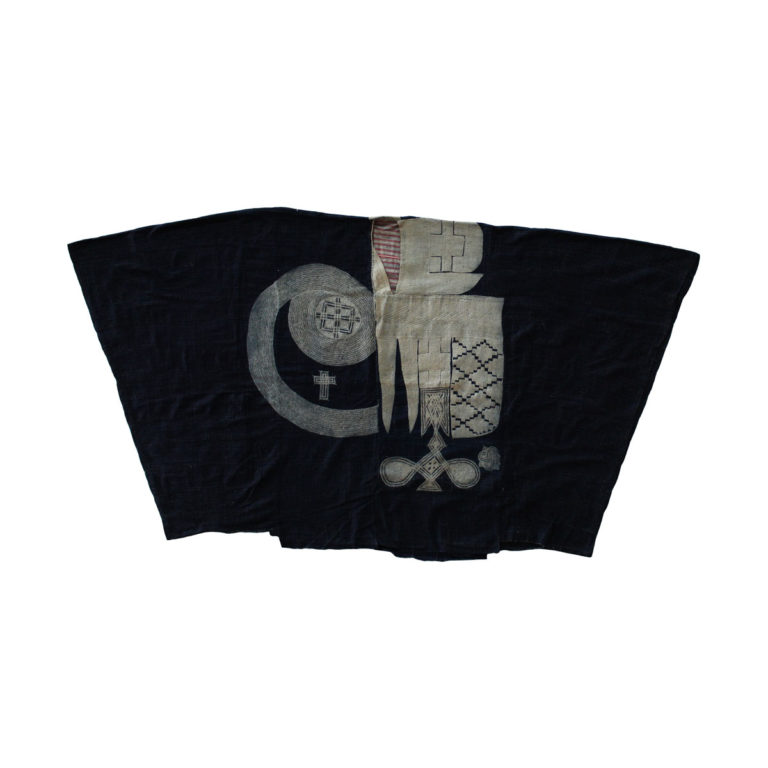
T238
African grand boubou robe Nigeria Mid 20th century The grand boubou/bubu is one of the names for a flowing wide sleeved robe worn by men in much of West Africa, and to a lesser extent in North Africa, related to the dashiki suit. The female version worn in some communities is also known as a m’boubou or kaftan. Its origin lies with the clothing worn by the Islamic Tukulor, Mandé and Songhai peoples of the 8th-century Takrur and Ghana Empires, and 13th-century Mali and Songhai Empires. The use of the grand boubou as clothing became widespread throughout the West African region with the migration of semi-nomadic groups and traders. The grand boubou is usually decorated with intricate embroidery, and is worn on special religious or ceremonial occasions, for example the two Islamic Eid festivals, weddings, funerals or for attending the Mosque for Friday prayer. It has become the formal attire of many countries in West Africa. Older robes have become family heirlooms passed on from father to son and are worn as status symbols.